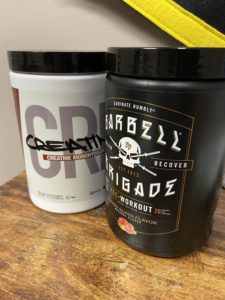
Category: Nutrition

If you’re one of my clients or we’ve spoken about nutrition in any way, you may already know my stance on this issue.
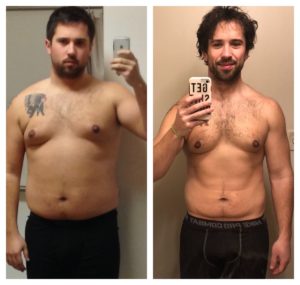
At that point, I was around 285 lbs. working a high stress yet sedentary job and took almost zero care of myself physically. When I decided to make the change, I immediately started running through a variety of different “weight loss” diets including:
-If it fits your macro’s
-Low carb
-Intermittent Fasting
-Bodybuilding style meals of just straight up chicken, broccoli, and rice
-Frozen meal delivery services
-Weekly meal prep
-Heck even weight loss pills and powders
Anything I could try to get an edge.
What was nice is that they all worked – in limited capacity. I would see results for a few weeks then it would plateau, I would fall off, then the weight would either remain stagnant or slide back up a bit again. I knew they weren’t healthy options and sometimes the diets were relatively drastic with big cuts and high intensity training – regularly doing 2-a-days at the gym.
Weekly meal prep and the bodybuilding style plan of 4-6 meals a day of the same thing day in, day out had the best effect and helped me see the best results in my own journey to my current weight (~220 lbs.), but the only reason it worked is because it fit my lifestyle.
I was a single.
I was living by myself.
I don’t mind eating the same foods every day.
I was working out twice per day.
I didn’t have a whole lot of social obligations.
I didn’t have a whole lot of other obligations beyond work.
I had the time, energy, and focus that I needed to dedicate to sticking with it… because why not? What else was I gonna do?
It worked for me because it fit my lifestyle.
Anyone who ever tries any weight loss diet will tell you, ultimately the one that worked for them is the one that when you pick it apart, doesn’t change their lifestyle by much.
Keto
Paleo
Atkins
Cleanses
Low-Carb
Low-Fat
IIFYM
Intermittent Fasting
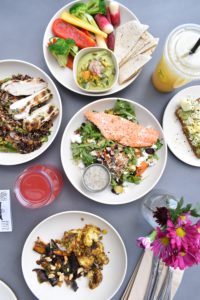 Whatever “diet” you’re trying to follow will ultimately fail if you don’t keep that in mind. As much as people like to complain about “change”, it’s really when we dial in a habit that we thrive the most. Life is difficult. Many of these diets are strict and difficult – making them super easy to slide off of and back into our old habits.
Whatever “diet” you’re trying to follow will ultimately fail if you don’t keep that in mind. As much as people like to complain about “change”, it’s really when we dial in a habit that we thrive the most. Life is difficult. Many of these diets are strict and difficult – making them super easy to slide off of and back into our old habits.
We, as a people, get so transfixed on what’s new, what’s flashy, what’s QUICK that we often neglect the fact that humans are built for distance. Not just physically (we have some of the best cardio endurance of any animal in the world), but in all facets of our life. We know we want the short term solution, but deep down, we know and understand that it’s the long term play that wins us the race.
So to answer the question on what is the “Best diet for weight loss”, I say there isn’t one.
Instead my suggestion is to approach nutrition like we approach fitness – looking to the long term.
Understanding we are at point A and need to get to point B and that the area in between is shrouded in mystery.
Rather than focusing on what diet will help us jump the fog, we should take a look at the footstep in front of us and slowly make habitual changes to our nutrition intake that lead toward better and better choices that cause as little disruption to our current life as possible, that will lead us in the direction of that Point B.
Holding ourselves accountable for where we are and understanding that we can get there, buying in on the system and ourselves, we can change our habits to ensure our bodies are taking in adequate nutrients through protein, carbohydrates, and fats coupled with healthy stress management, sleep, physical activity, and hydration – little by little improving each area of our life and building on top of each other toward a better and healthier us.
If that’s not a good enough answer for you, I guess I can say, the best diet for weight loss is:
What’s the main part of your diet you’re struggling with most right now?
You’ve been killing it at the gym and you’re seeing some results, but something just isn’t clicking. You’ve looked at sleep habits and stress management and increased your water intake, but there’s just one last hump you CAN’T seem to get over.
The dreaded grocery store!
Like anything we fear, the best way to overcome it is to take it head on and make it our friend. Believe me, it wants to be, but forces greater than us or the grocery are trying to keep us apart! Read on through and let’s address my favorite Healthy Grocery Shopping Tips!
Without getting too deep into the nutritional breakdown of how terrible most food products are now thanks to vegetable and seed oils, over processing, and essentially all boxed or bagged foods being a few science experiments away from being either plastic or dog food, there are a few simple tips you can follow to get your nutrition in check and moving in the right direction of all your other healthy habits as well!
We’ve probably all hear the adage, “Don’t go to the grocery store hungry.” Because if you do, chances are that you’ll purchase with your eyes and taste buds rather than your brain and body in mind (guilty!). Being hungry in a store designed specifically to sell you any food imaginable is a recipe for impulse purchase disaster. One of my favorite things to do that has helped me a TON in curbing impulse/poor food choices has been to simply MAKE A LIST.
There are a bunch of apps, but all you need really is your notes app or a pen/paper and about 2 minutes.
A couple of common misconceptions about eating clean/healthy are that either A) you must eat something extravagant and time consuming to make or B) all you can eat is chicken, broccoli, and brown rice. Well, if you go with option B), your grocery list is going to be SUPER easy and if you go with A, you probably won’t be sticking to the list very long when you have to figure out all the ingredients you’ll need for that breakfast sandwich with poached egg whites, 1/3 avocado, cilantro lime hollandaise, blah, blah, blah that you’ll make once and end up throwing out the rest of the ingredients.
All you need are a few staple items that fall under your protein, carbs, and fats that are your “Go-To” items. They will be the focus of most of your meals with rotations of combinations to keep it varied, but simple. The main idea of going in with a list is to help keep you on track and help avoid the lure of all the things you don’t need, but will inevitably want as you stroll through the aisles.
Not only that, but knowing what you want, you can choose to put items on your list that are typically found along the perimeter of the store, rather than down the dreaded aisles of no return! As mentioned a little earlier, the food products you’ll find in the aisles are heavily filled with processed foods, sugars, fats, and a bunch of other things that your body really doesn’t want, though your taste buds try to say differently. It’s noted that modern grocery stores contain over 40,000 items, all of which want your attention and most being down these aisles.
Grocery stores are mostly set with all their fresh ingredients along the outside perimeter – where all the fresh meats, fruits/veggies, milk, eggs, yogurt, etc… clean items you should focus on are located. These can also be categorized as the food items with limited to no ingredient list. A rule of thumb to help with your food list and grocery picking is that you want to aim for foods with the least amount of ingredients listed as possible. The more ingredients you see on a food label – looking at potato chips and cookies – the more processed and less healthy they will be for you.
If you’ve already mastered shopping the perimeter and thinking, “yeah sure that’s fine for fruits/veggies, but meat (protein) is so dang expensive!” then you’re in luck. Often times if you check the grocery stores website or app, they will showcase deals going on for all sorts of products, including protein and meats, to help you plan your weekly meals and shopping list.
Not only that, but it can help you focus on what types of protein you should buy in bulk! Now, I’m not talking about buying 3 fridges worth of meat because that would be outrageous, but I can’t tell you how great it is to search the Kroger app and see that Beef Tenderloin Roasts are Buy 1 Get 1 Free. They are still pricey – usually around $20-30 per roast, but if you can find them with the B1G1 deal, then you’ve just picked up at least a week or two’s worth of protein in one. Buying groceries at the time can feel expensive because you’re buying a lot of 1 product at once, but when you look at it from above and see that you can get multiple meals out of one product (think a pack of chicken breast that may run you $10, that’s 3-5 dinners for that $10 pack compared to swinging through McD’s where even if you hit the value menu, chances are your meal is going to be at least $5-10 PER MEAL.
Meat freezes well and a quick thaw or throw right into a crock pot can help you get multiple meals for a great deal. The price up front might seem a little high, but averaging versus eating out every meal or even just once per day, the savings is a no-brainer in the long run.
Eating healthy doesn’t have to break the bank, cause anxiety, or be overwhelmingly complex. If you feel overwhelmed, try taking 5-10 minutes before leaving the house and follow these tips to make the grocery store trip quick and painless.
Make a List
Keep to the perimeter as best you can
Check the grocery site/app ahead of time for deals
Buy protein sources (meat) in bulk
Here’s a sample of what one of my Grocery Lists might look like:
Fruit (2-3 seasonal)
Potatoes
Baby Carrots
Frozen Peas
Frozen Broccoli
Meat (check deals – beef tenderloin/rotisserie chicken?)
Yogurt
Milk
Eggs (30pk)
Noodles + Sauce
5lb bag of rice
Sweet Treat (life is about balance)
Happy shopping!
The workout is done. You kicked its butt and you can already feel your body getting sore as the muscles begin the process of repair. You’ve walked in the door to your home and popped open the fridge to make a quick meal as your belly rumbles, begging for some food to replenish.
You know you need a clean meal made of quality food sources to keep you on track for your goals – whatever they may be – but you’re not sure if you need to lean more heavily toward carbohydrates or protein in the post-workout hours.
It doesn’t matter what your ultimate goal with your fitness journey is, protein and carbs (and fat) are high priority macronutrients that are found in all foods and need to be consumed in their appropriate proportions to help your body. Every meal should be well-balanced around these macros but the timing in which you consume higher quantities of one of another could benefit your results and progress more than you probably thought.
So which do you focus on post-workout?
If you guessed protein, you’d be on the right path.
While carbohydrates are still good and necessary for your body and help replenish your energy stores – their primary function – it is protein that we want the bulk of our post training meal, snack, dish to be made of.
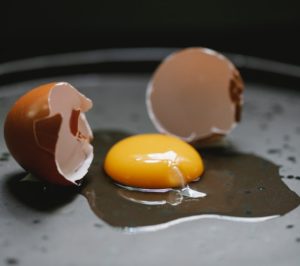
While you are training, whether lifting weights; doing yoga; playing a sport; etc. your muscles are contracting and expanding and using energy (carbs) and in doing so, creating micro-tears in the muscle fibers. We’ve discussed this in past articles, but these microtears are necessary proof that the muscles are working. This is what causes inflammation during training, it releases the energy and creates waste (lactic acid). During the recovery time period – when the muscles are not being used – they are doing everything they can to recover before you put them under stress/resistance again. In order for the body to do this, it breaks down the food we eat and funnels the protein directly to the re-building muscles. The muscles then take the protein and use it to repair and rebuild stronger and better than they were. This is why/how we are able to adapt to heavier stresses – the more your body gets used to a certain stress, the stronger the muscles become to manage it, hence why we continue to increase the resistance (higher weight/reps, less rest, more sets, etc) to continue to build a better body.
Though your standard diet should provide enough protein (about .8-1.0g per pound of bodyweight), if you’re not feeling like recovery is happening as quickly as it should, or you’re on shorter turn around between training sessions or use of particular muscles, a higher protein meal or added protein source (shake) after training sessions can help the body recover quicker but quickly facilitating protein back to the muscles to begin repairing immediately and getting you back in shape quickly.
Carbohydrates do have a special place in the body as they are the energy source for almost all bodily functions and complex/high quality carbohydrates are suggested to keep you going, focusing on them post-workout is not as highly reg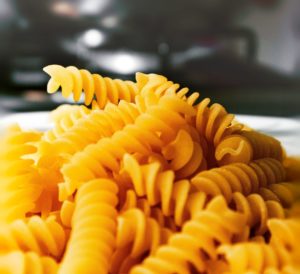 arded compared to protein. Carbohydrates should be more focused prior to a training session as they will help provide the energy needed to get through your training session.
arded compared to protein. Carbohydrates should be more focused prior to a training session as they will help provide the energy needed to get through your training session.
It is recommended to find a balance and take in both protein and carbs (along with healthy fats and plenty of veggies) at all meals, if you’re looking for an added boost, protein centric meals/snacks after training could go a long way to help speed up recovery and help build better, stronger muscles vs post training carbohydrates.
I personally enjoy chocolate milk, a protein shake, eggs, or a quick chicken breast wrap as my go-to post workout protein meals.
What is your favorite protein source?
One of the most popular goals for anyone entering training, working out, nutrition, etc, is to lose weight. With that, supplement companies have been falling all over themselves to create products that they claim to be THE ONE to help you shed that fat once and for all. The supplement market is flooded with pills, powders, and shakes that promise to melt away the stubborn fat you can’t seem to nix, but in truth, they are all snake oil.
As someone who battled with his weight and eventually went through his own weight loss transformation before becoming a personal trainer, I would be lying if I said I have never used a fat loss supplement in the hopes that it could help me knock off those extra lbs.
But I will honestly tell you also, that none of them worked.
Looking at an ingredients list for fat loss supplements can be as daunting as looking at a box of cereal, full of words and things you can’t pronounce and probably shouldn’t allow yourself to ingest, but almost every bottle you pick up will most likely boil down to 2 main components.
Some sort of Caffeine + a Diuretic
Caffeine
Probably one of the highest consumed ingredients in America (behind just sugar), caffeine has been in the spotlight for a long time thanks to the benefits of increasing our energy levels and helping us get through those midday slumps. It’s in coffee, energy drinks, pre-workouts, and is a large component of pre-workout supplements. Because it increases our energy levels, part of that process is increasing our heart rate our bodies natural functions. With our body moving more, it slightly increases the thermodynamic effect of our body – the ability to burn energy. That energy being burnt, it is claimed, is the fat cells we store. By causing our body to move more – even if just internally – the idea is that it’s burning fat for that energy. This can be seen as ingredients such as: Purcaf, Caffeine Proprietary Blend, Caffeine Anhydrous, or Green Tea Extract*
*Green Tea Extract is essentially caffeine specifically sourced from green tea – thought to be a naturally occurring energy source (similar to coffee beans).
Diuretics
The other thing to be aware of is the use of diuretics. Most fat loss supplements include ingredients that cause the body to shed water. Many people who start taking these supplements and see a steep drop in weight at the beginning are really just seeing that their body is flushing out water that has been retained. This may be helpful if you’re competing in some sort of physique/bodybuilding competition, but if you’re an average Joe like myself, you want water in your body to help it function optimally. Diuretics are hard on your kidneys and since our bodies are made up largely of water – cutting it out can have other detrimental consequences.
I’m not here to tell you not to try whatever you can to lose the weight if you feel it’s necessary, but I want to try and give a testimonial, that they may provide some sort of aid, beyond the caffeine boosting energy and diuretic components dropping water, these supplements rarely work to the effect that they claim.
True fat loss comes from focusing on the hard things you don’t want to do – cleaning up your nutrition; exercising regularly; prioritizing rest and recovery; and managing stress.
Take care of those things and the fat should melt away the way no supplement can.
Do the un-fun things now and enjoy the fruits of your labor later.
Trust the process and reach your goals!
What’s your favorite fat loss myth you’ve heard? Let’s start a thread below.
There comes a time in every journey where we hit a plateau. You broke through the initial hard parts of creating new habits by addressing the things you needed to change. You adjusted your schedule and made them easier to perform while limiting access to the detrimental norms that were keeping you from your best self.
You’ve put the cookies away; stopped buying fast food (as often); steer clear of the chip aisles at the grocery, and you’re seeing the results of your increased veggies and protein in addition to the weight training that’s turned from enemy to friend.
But you’ve hit the wall.
The number on the scale isn’t falling anymore.
Your workout progression has stagnated and you’re not seeing progress.
Aggravation sets in and you feel like throwing in the towel and picking up that cheeseburger you saw on the sign on your way home from work.
But you also know that you’ve put in so much work and it’s not worth giving up when you’ve come as far as you have.
What can we do to break through the plateau!? Let’s look at a few ways to breakthrough training and weight loss plateaus.
This is probably the easiest way to bust through a plateau! One thing people don’t realize is that when you’ve been doing the same thing for a while (4+ weeks) in regards to training and nutrition, your body adapts. As much as we think we want variety and change all the time, the body is naturally designed to run as efficiently as possible. When you go through your training and keep your nutrition at a certain level, yes you will see progress and change initially, but that adaptation is the time when your body is basically screaming, “Woah, something’s different! We have to work harder! Let’s go boys!” But as you continue on the program, it recognizes that it’s doing similar workouts; it’s taking in similar calories; it learns and builds itself into an efficient machine that is able to perform that work with those calories and doesn’t require as much energy to do the same work. Therefore you hit a plateau.
This will be the time that you go through your log to see if it’s time to change the program – adjust your training plan; adjust your nutrition schedule; work on a new habit you’ve been putting off.
No one is ever going to be 100% efficient in their nutrition and training and there will always be something you can adjust to work on. Heck, after a while, it can be re-visiting a habit that worked and now that you have a new baseline to work off of, it may benefit to re-introduce back in for new results.
Another reason we plateau is when we’ve been running on a program or diet for so long that our body has reached its efficiency limit. You can only handle so much before your body needs rest.
Similar to an athlete, they have “in season” training and “off season” training. They don’t go balls to the wall all year – they would burn out. Sometimes the best way to break through a plateau is to eliminate the rigidity of the structure and enter a period of maintenance in which your goal stays in place, but you back off the strict structure you’ve been following. Allow your body and its systems a chance to relax and reset before diving into the next phase of your training. This doesn’t mean stop by any means, but release the gas pedal a little bit and lower the intensity to a manageable point.
Along the same line as adjusting the program or taking time off, maybe you enjoy keeping it going despite the lack of results, one of the most often neglected facets of a training or nutrition program is rest/recovery. It is during the down time that our body repairs itself; utilizes the nutrients we’ve fed it; and creates the progress we’re looking for. If you’ve been going Hard AF for weeks or months without a break, it may be time to prioritize rest and recovery for a week or two to allow the body to re-achieve its homeostasis.
Beyond adjusting the program, maybe it’s time to re-visit your goal as a whole. You’ve been pushing to lose weight and you’ve seen results but the scale isn’t going down anymore. Maybe it’s time to shift your focus from weight loss to building muscle. One of the benefits of building muscle is that it tends to use fat stores as energy. The adjustment to your goal could be the key to unlocking that next step in your evolution.
You’ve taken names and kicked butt so long and been so focused on that scale number and not seeing it go down has been ruining your mental health. WHY WON’T IT JUST GO DOWN?! After taking a deep breath, let’s remember that the scale is a single tool in our belt. Sit down and take stock of yourself. How do you feel on a day-to-day basis? How are your energy levels daily? How do your clothes fit? How is your confidence? How is your sleep? What things have others noticed or complimented? How is your training? How is your mental health? Taking stock of the non-scale victories is a great way to help break through plateaus and keep your mind on what’s actually happening and keep from falling into a “woe is me” rut.
You are a kick ass person who puts in a lot of hard fuggin work. But like I mentioned, your body is literally designed to be as efficient as possible. You may want to burn calories, but it’s trying to keep them as best it can. It will develop ways to be efficient, which is why when you do the same workout; eat the same meals; etc; over time your body learns how to burn the least amount of calories and your progress hits a plateau. When this happens keep these tricks in mind to help you bust through to the other side.
-Adjust the program
-Take some time off
-Prioritize rest/recovery
-Re-visit your goal
-Remember the non-scale victories
What are you going to do to break through your plateau? Sound off below and let’s keep the progress moving forward!